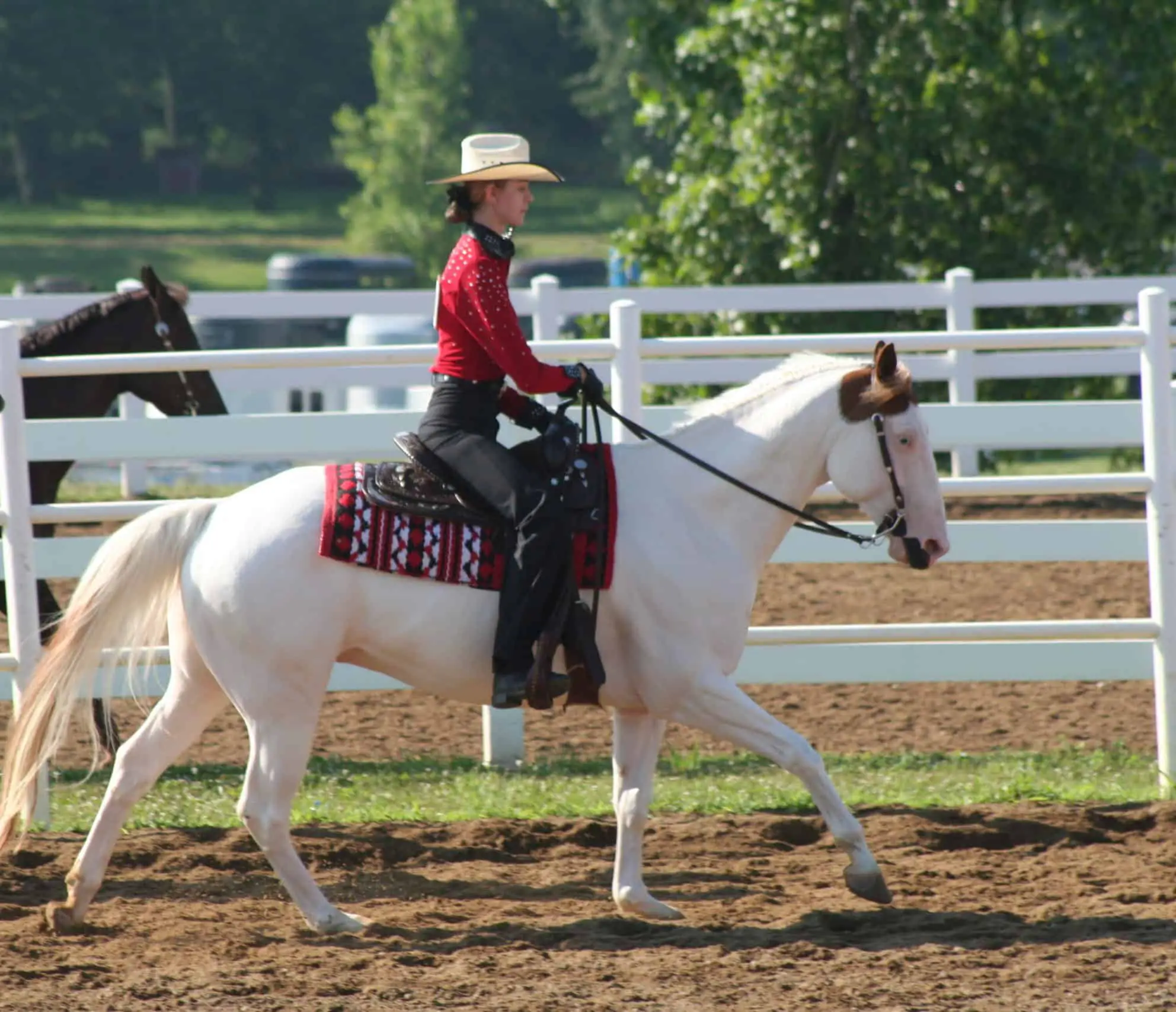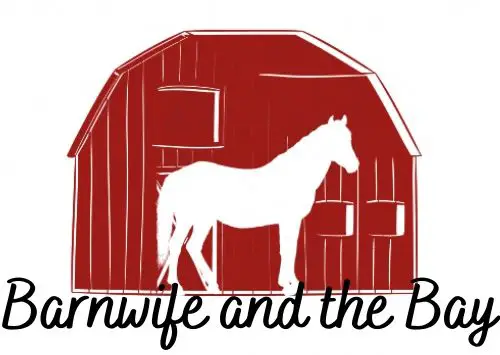
Have you ever seen a mostly white horse with a patch of color on its head and ears that reminded you of a hat? This color pattern is called a medicine hat. Medicine hat paint horses can be very striking.
I had one of these horses when I was a kid, and I can speak from abundant experience – they catch eyes and turn heads in the show ring. 
Beyond the attention they bring for their memorable looks, there are many other cool things about medicine hat horses.
In this article, I’ll go over the most fascinating facts to know about the very special medicine hat horses.
What are medicine hat horses?
The medicine hat is the name of a specific marking on a pinto horse. The medicine hat marking is a colored patch on the top of the head covering the ears of a horse with an otherwise mostly white head. The colored patch can be any color and the rest of the horse’s coat pattern does not matter.
Horses with medicine hats usually have blue eyes and pink muzzles. This adds to their striking and sometimes odd appearance.
Horses of any breed can have a medicine hat. They are seen the most often in the most colorful breeds, like American Paint Horses, mustangs, and some pony breeds.
The medicine hat horse in history and culture
In the Old West of the United States, some legends of magical powers were connected to horses with medicine hats, especially those with the accompanying shield-like pattern on the horse’s chest. These legends were mainly propagated by Native American tribes of the plains, who bred horses specifically for these color patterns.
Typically, the legends suggested that a horse with the medicine hat and shield pattern might have special athletic ability.
Sometimes tradition also included that the horse was good luck when used as a war horse. Such a horse ridden into a fight might be able to protect its rider from harm as long as they were on its back.
San Domingo The Medicine Hat Stallion
The legends surrounding medicine hat horses in the Old West are immortalized in the charming children’s book by Marguerite Henry titled San Domingo The Medicine Hat Stallion.
Marguerite Henry wrote this story based on real life in the Old West. In the story, a boy is given a colt with the medicine hat and shield markings. In the process of bonding with and training his horse, he discovers the mystery and magic attributed to these rare and special horses by his Sioux neighbors.
More about pinto patterns
Pinto horses can be any breed. Many pinto horses in North America are American Paint Horses. The American Paint Horse is a stock breed with American Quarter Horse and/or Thoroughbred ancestry.
The American Paint Horse Association (APHA) uses only 3 terms to describe the color pattern of Paint Horses. These are tobiano, overo, and tovero. Any specific markings like medicine hats, piebald, or skewbald are included under the 3 main color patterns.
Tobiano
According to the APHA registration guide, horses with the tobiano pattern may be either predominantly colored or white. Tobiano attributes include:
- The dark color is present on the horse’s flanks.
- The white crosses its back between withers and tail.
- All four legs are white, at least the bottom portion below the hocks and knees.
- The dark patches are distinct as rounded patterns and usually extend over the neck and chest like a shield.
- The head is solid or solid with a blaze, strip, star or snip.
- The tail is often 2 colors.
Overo
According to the APHA, horses with the overo pattern may also be either predominantly colored or white. The pattern characteristics are as follows:
- The white does not cross the back between withers and tail.
- At least one leg is colored.
- The white is scattered or splashy, as opposed to distinct and rounded.
- The head usually has a lot of white, like a bald face or apron face.
- The tail is one color.
Tovero Pattern
According to the APHA, tovero horses combine some characteristics of both tobianos and overos:
- They usually have more white than color.
- Color is present on the flanks.
- The colored patches are rounded and distinct and may form a shield shape over the neck and chest.
- Often have colored patches around the ears that may or may not extend over the face.
- May have spots of varying size near the tail.

APHA Registration Guide – Color Patterns
Medicine hat horses would usually fall into the tovero category of color patterning.
The spots of color present on many tovero horses should not be confused with the leopard spots characteristic of Appaloosas. Those are produced by a different genetic variation. The leopard, or LP gene, and other pattern modifier genes are what give Appaloosas their spotted pattern. More on Appaloosa coloring and inheritance is here.
Pinto horses can also be registered with the Pinto Horse Association of America (PtHA). This registry admits horses of any breed background, except draft horses and the Appaloosa breed.
The PtHA only recognizes 2 categories of coat patterns: tobiano and overo.
Like what you’ve learned about medicine hat paints in this article? There’s more to learn about horse breeds including American Paint Horses, Quarter Horses and more! Jump into these articles too!
- Quarter Horse vs Thoroughbred
- 24 Best Dressage Horse Breeds (Plus Nontraditional Breeds)
- 21 Best Horse Breeds for Larger or Heavy Riders
If any readers have Native American heritage and can add to or correct anything I’ve written, I would love to hear from you! I would love to know more and be able to update this post with even more detailed, historically and culturally accurate information.
Photo cred for second photo: Tatjana Jones
